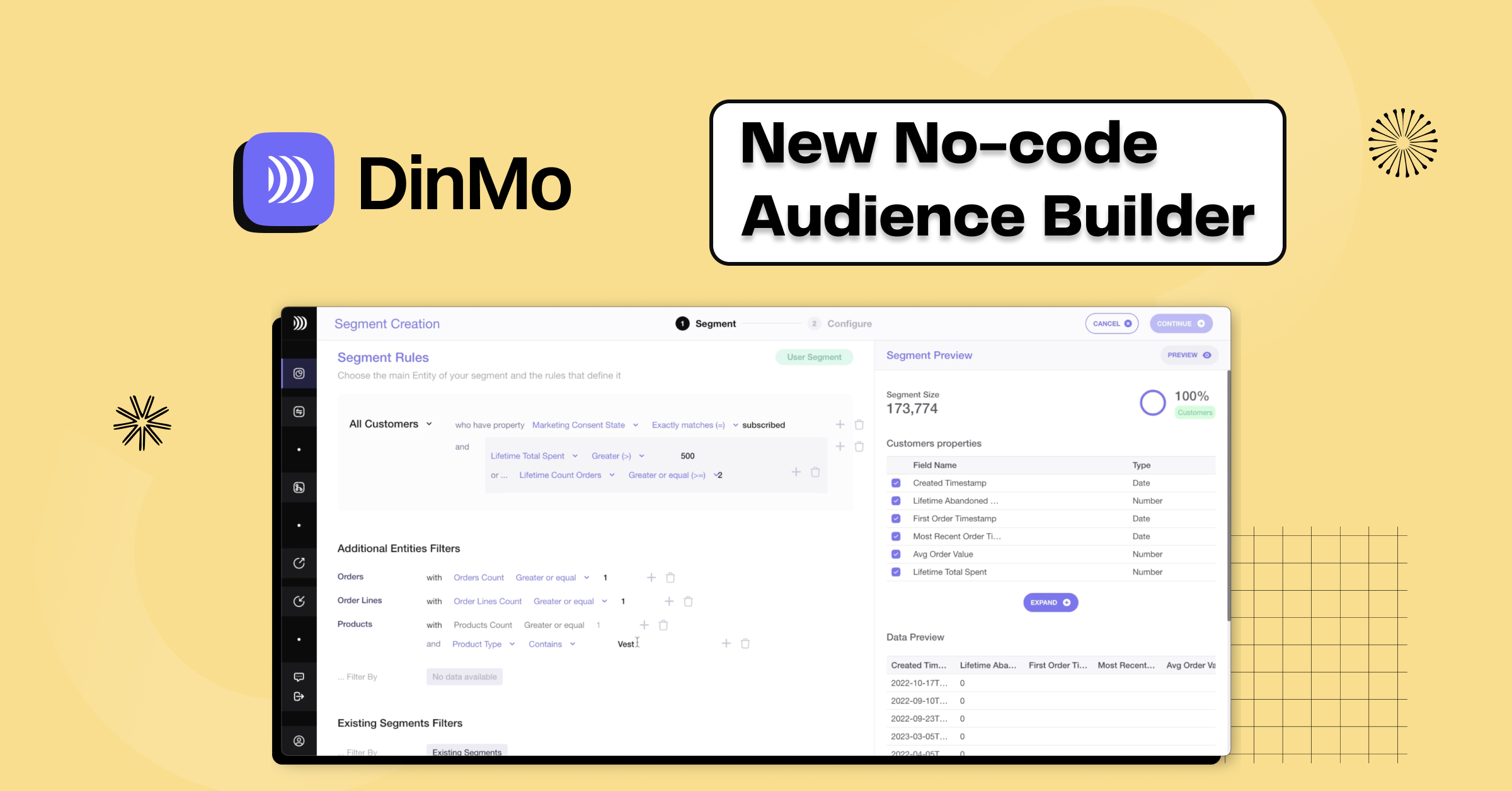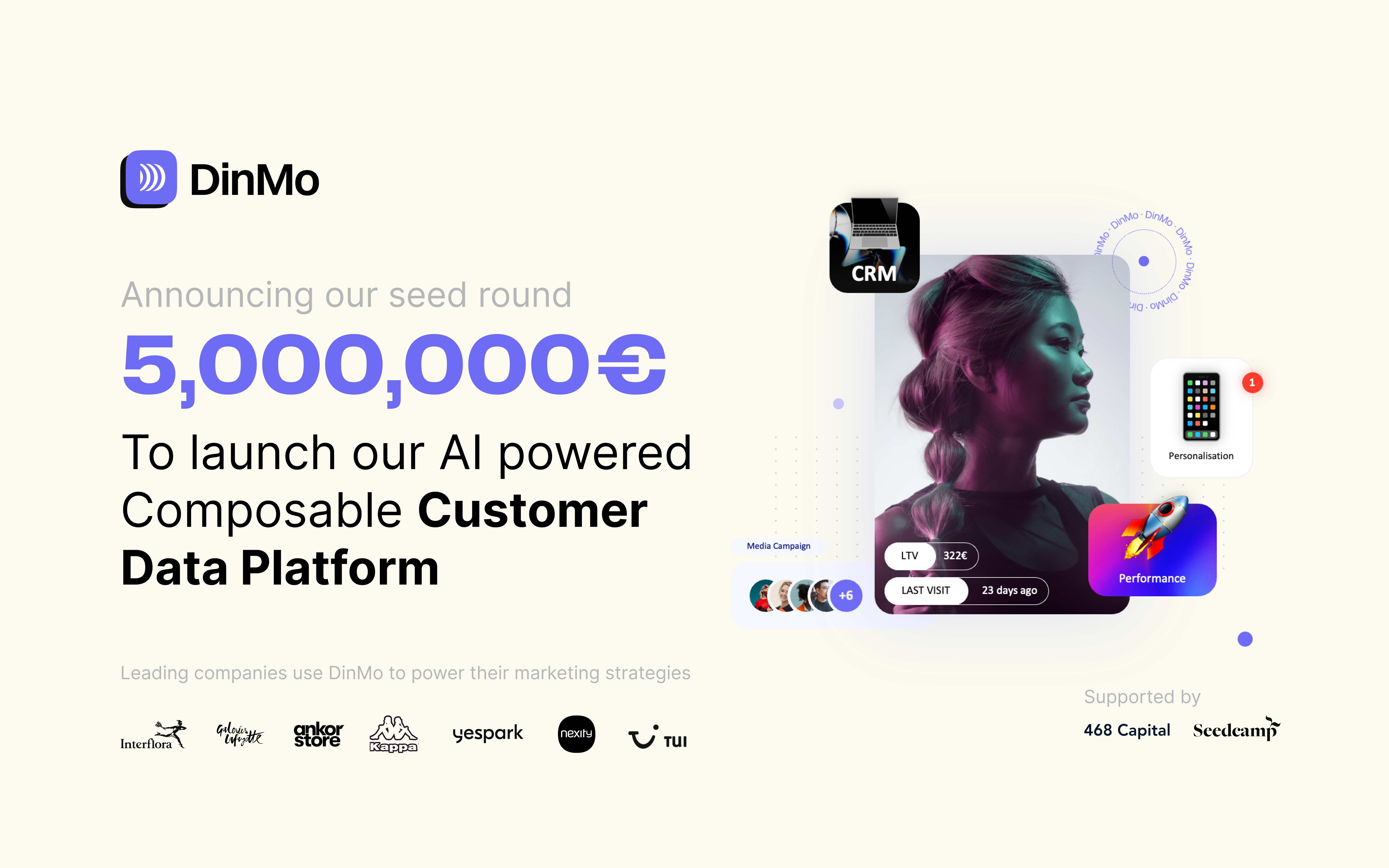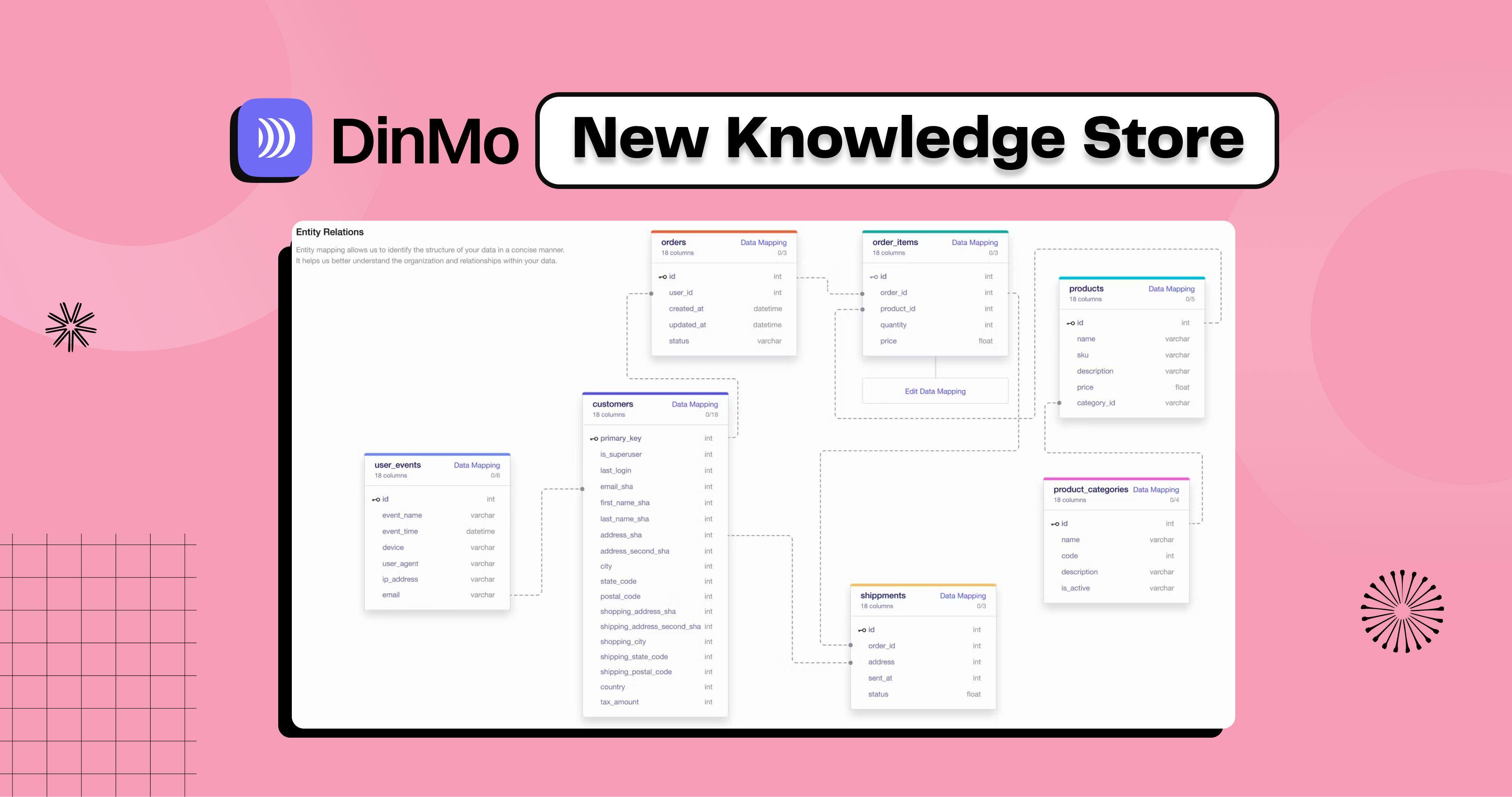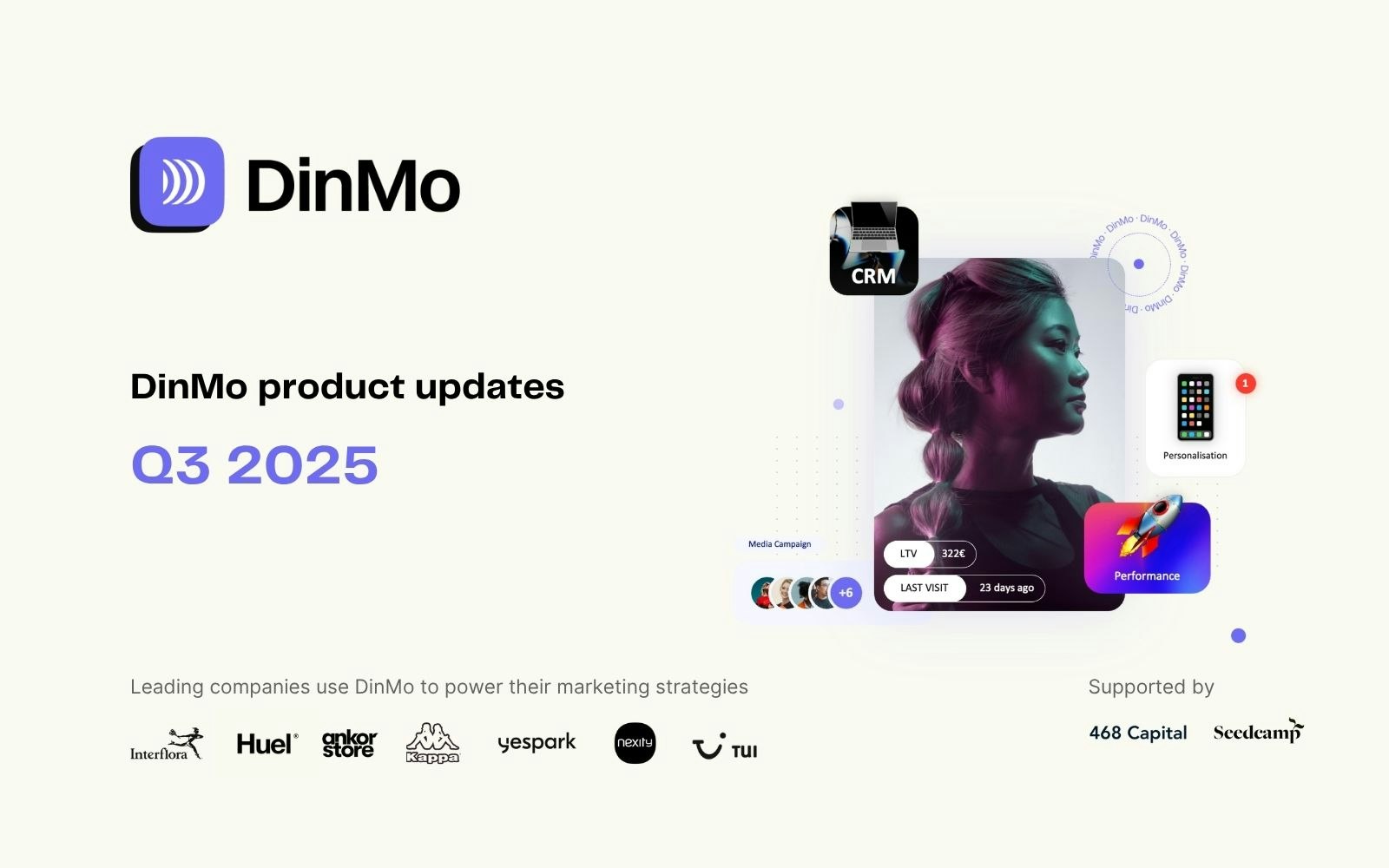
DinMo product updates for the third quarter of 2025
4min • Last updated on Nov 13, 2025

Olivier Renard
Content & SEO Manager
At DinMo, every quarter is an opportunity to bring new features to our composable CDP. Our goal remains the same: to empower marketing and data teams to turn customer data into effective activation levers.
As with Q1 and Q2, this third quarter of 2025 is no exception, with major improvements in segmentation, product recommendations, and available integrations.
On the agenda:
RFM Segmentation: group your customers based on recency, frequency and monetary value with ease.
Enhanced Calculated Fields: create personalised labels using intuitive logic, no SQL needed.
More precise product recommendations: narrow the prediction scope for more relevant suggestions.
SSO connection with Okta: secure and simplified access for your teams.
Revamped access rights management: assign viewer or editor roles to strengthen governance and data security.
New destinations: Attio, Google Store Sales Direct, Azure Storage, Google Drive, Google Sheets, Zuora, HubSpot (custom objects), Attentive extension.
Discover in detail how these updates will enhance your experience with our Customer Data Platform. 👇
RFM Segmentation
RFM segmentation (Recency, Frequency, Monetary) is a proven method for understanding your customers' purchasing behaviour. It is based on three simple criteria:
Recency: time since the last purchase. This reflects current engagement, though its relevance may vary by industry.
Frequency: number of purchases made over a given period.
Monetary: amount spent, which helps identify the most profitable customers.
By combining these dimensions, you generate an RFM score that facilitates the creation of strategic segments. For example: “Champions” (loyal and recent, high-value customers), “At-Risk” (those losing engagement), or “Promising” (new customers with potential).

Example of RFM segmentation
💡 Example use case: an e-commerce retailer might target VIPs with an exclusive offer to boost loyalty, while launching a reactivation campaign for those who haven’t ordered in several months.
With DinMo, RFM analysis is built directly into the platform. No need to handle files or SQL: scores are automatically calculated and updated continuously. Marketing teams can then leverage dynamic segments in just a few clicks and activate them across their preferred channels (email, push notifications, SMS, Ads…).
By simplifying its adoption by business teams, the RFM method becomes a powerful tool to personalise campaigns and maximise the value of every customer interaction.
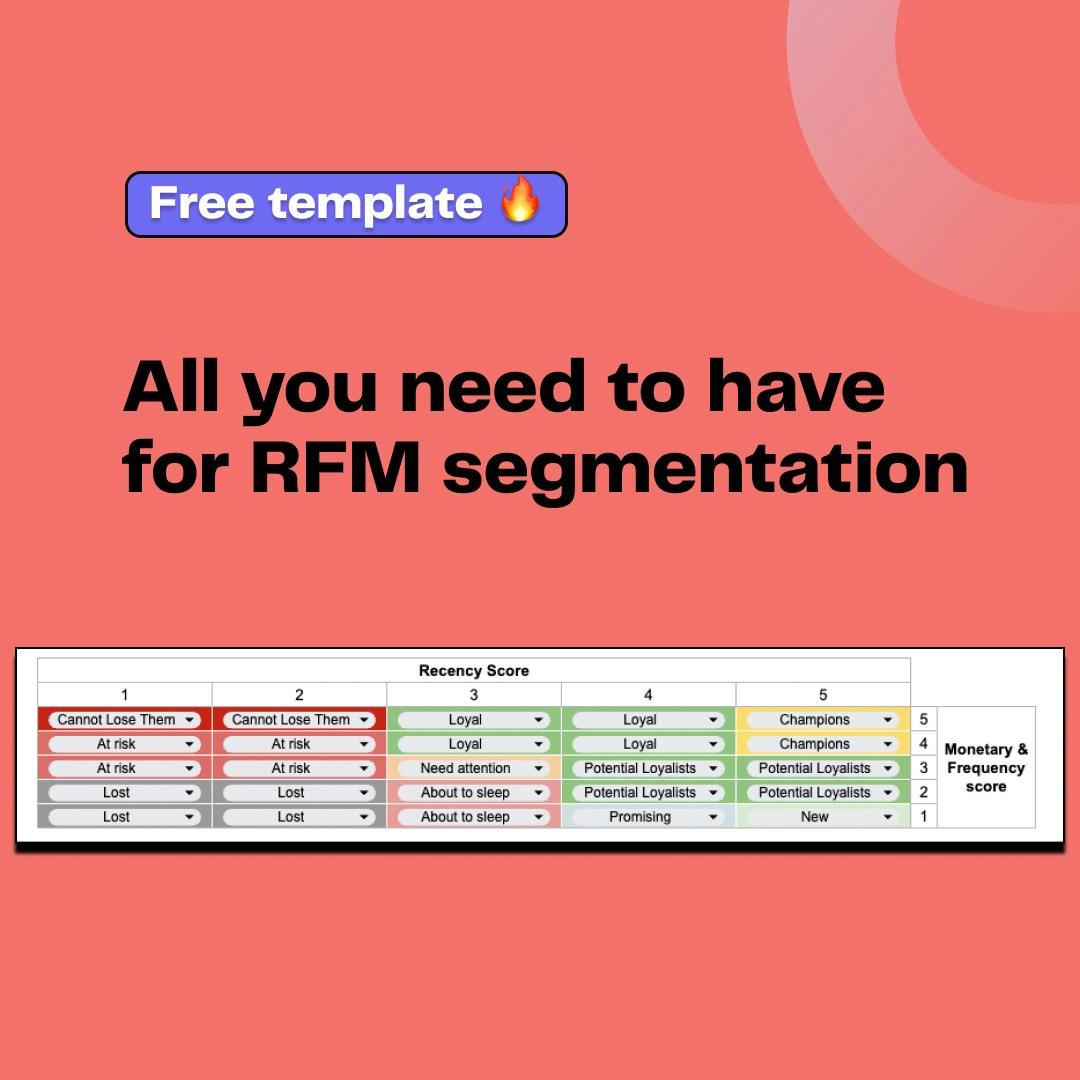
Download our template for RFM segmentation
More powerful calculated fields
Our calculated fields are gaining flexibility with the introduction of labelling. You can now turn any field into clear, actionable labels using intuitive if/then (case/when) logic — no SQL required.
Concretely, this allows you to create explicit categories from your data. For example, a churn score can be automatically classified as “low”, “medium”, or “high”.
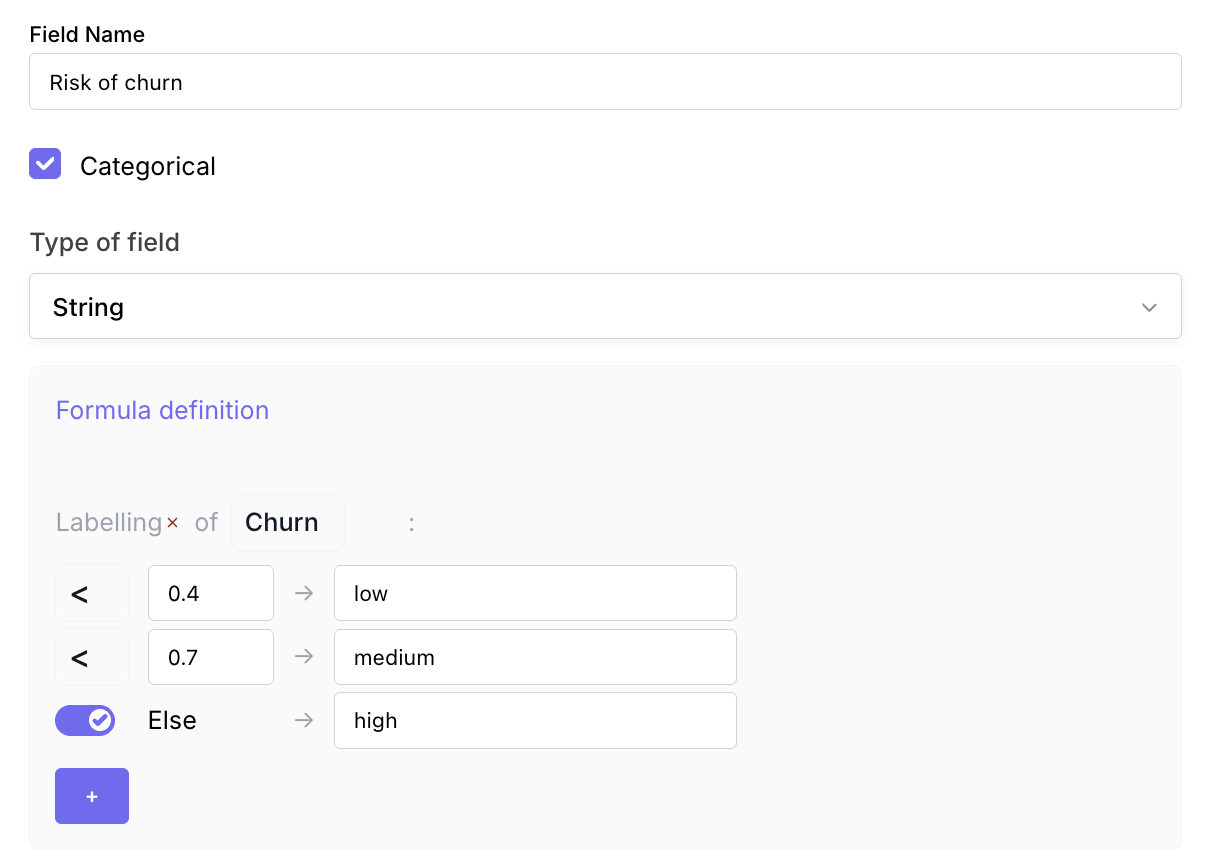
No-code labelling in calculated fields
Similarly, you can segment your customers by risk level, value or engagement based on simple rules.
This new function facilitates cross-team collaboration: everyone can understand and use data without relying on technical language. Analyses are faster, segments more accurate, and marketing activation smoother.
Improved product recommendations
Product recommendations are one of the most-used features in our CDP. They allow you to predict the next item a customer is most likely to buy, and activate these insights directly in your marketing channels.
Until now, predictions were generated across the entire catalogue. With this new update, you can now narrow the recommendation scope for even more relevant suggestions.
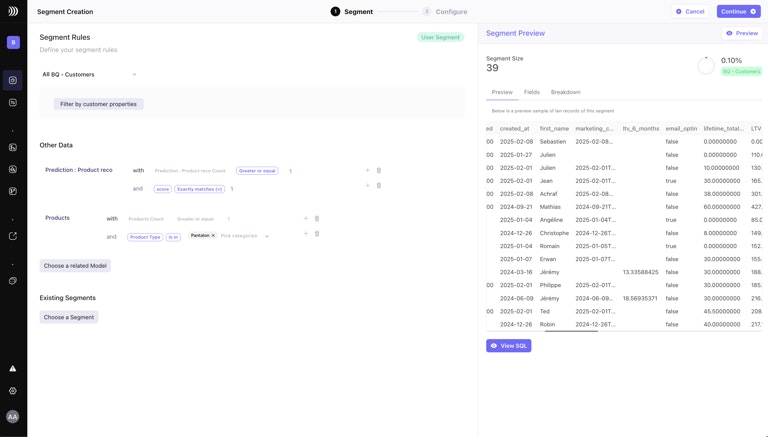
Example of product recommendation in DinMo
Specifically, you can:
target a specific product category (e.g. beauty, electronics or fashion),
exclude certain items (out of stock, not discounted, or reserved for another channel),
focus recommendations on the strategic ranges you wish to promote — and send your customer the Next Best Offer.
💡 Example: suggest a fragrance from a new collection rather than letting the algorithm pick from the entire catalogue.
These improvements enhance campaign precision and impact. They ensure that each recommendation remains aligned with your business priorities and operational constraints.
Enterprise feature: SSO with Okta and access control
Security and ease of access are essential, regardless of your company size. Our CDP now offers Single Sign-On (SSO) integration via Okta.
This solution lets team members access DinMo using the same credentials as their other tools — no need to manage new passwords. Okta centralises rights management: an admin can grant or revoke access in just a few clicks, while meeting the highest security standards.
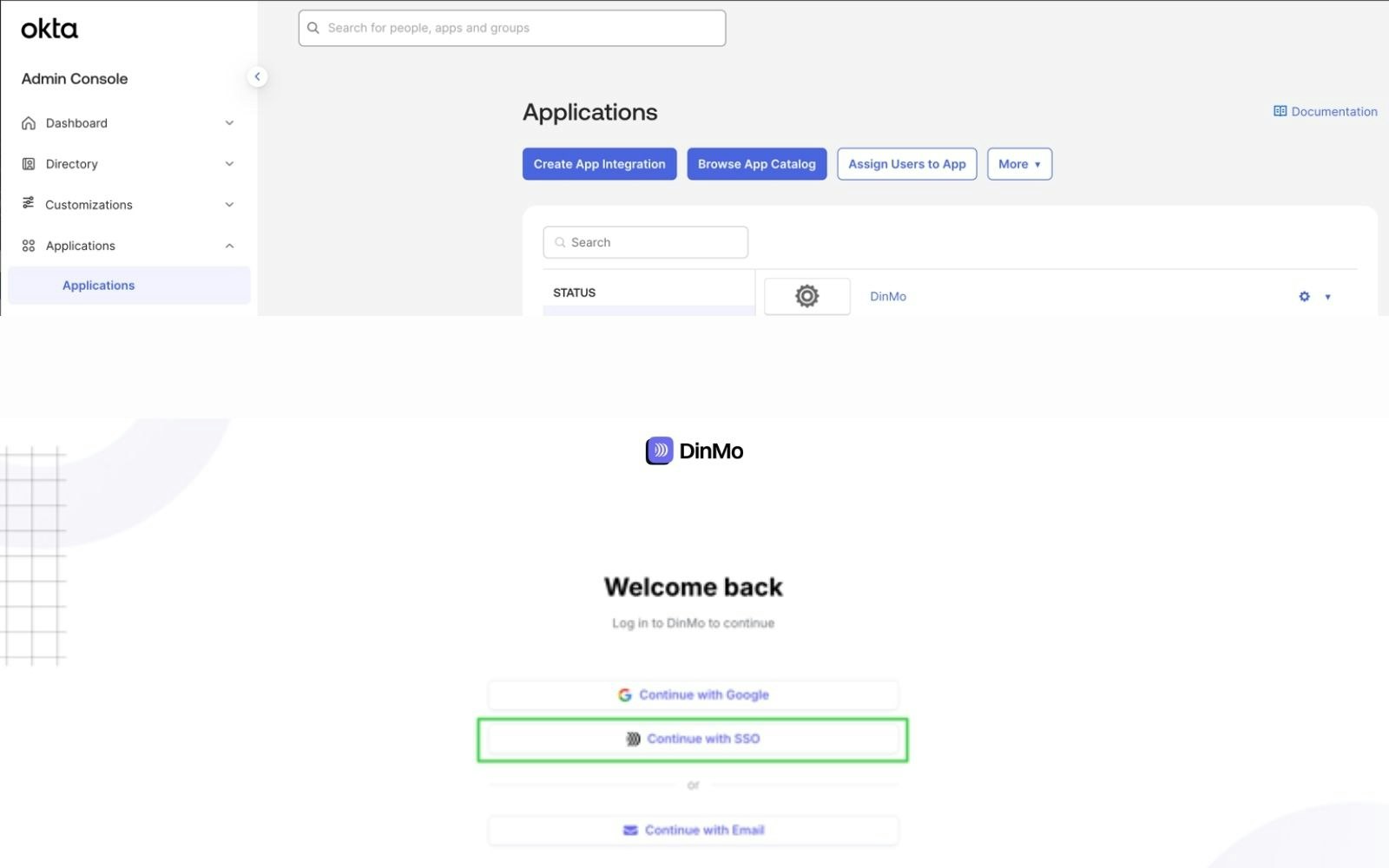
SSO login with Okta in DinMo
For teams, it means greater ease and efficiency. For the organisation, it adds an extra layer of compliance and data protection.
Access rights overhaul
Access management has also been improved with the ability to assign viewer or editor roles per module. Teams gain both flexibility and security when organising their projects.
New integrations this quarter
👉 This quarter, DinMo continues to expand its connector ecosystem. The goal remains the same: enable you to activate your data across your daily tools, without technical complexity.
Attio: sync your users, people, deals, and companies to enrich your CRM and automate commercial workflows.
Google Store Sales Direct: link your offline sales from physical stores with Google Ads campaigns to better measure the real impact of your marketing efforts.
Azure Storage: export your segments and models directly to Microsoft’s cloud platform for seamless, secure data sharing.
Google Drive & Google Sheets: export your audiences in a few clicks to view, manipulate or share them easily with your teams.
Zuora: connect DinMo to your billing and subscription management solution to align customer data with financial workflows.
HubSpot (custom objects): enjoy enhanced integration to also sync your custom objects, in addition to contacts and companies.
Attentive (extension): activate your audiences even more precisely in Attentive, with support for customer attributes, and leverage personalised email and SMS campaigns.
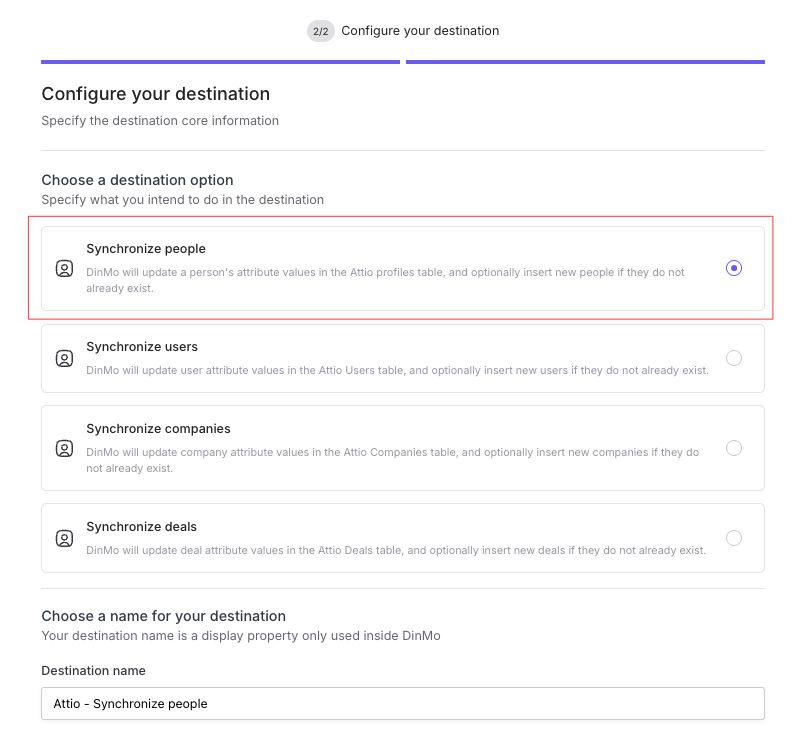
Synchronise Attio with DinMo
This third quarter of 2025 reaffirms our commitment to making data access ever simpler, safer, and more efficient.
RFM segmentation, refined product recommendations, enhanced calculated fields, improved access controls, enterprise SSO, new integrations… Every improvement aims to give teams the ability to act quickly and efficiently — without technical barriers.
💡 And the story continues! New enrichment and intelligence capabilities are on the way to make DinMo the most complete composable CDP on the market.
Have an idea, specific need or feedback? Get in touch with us!

















